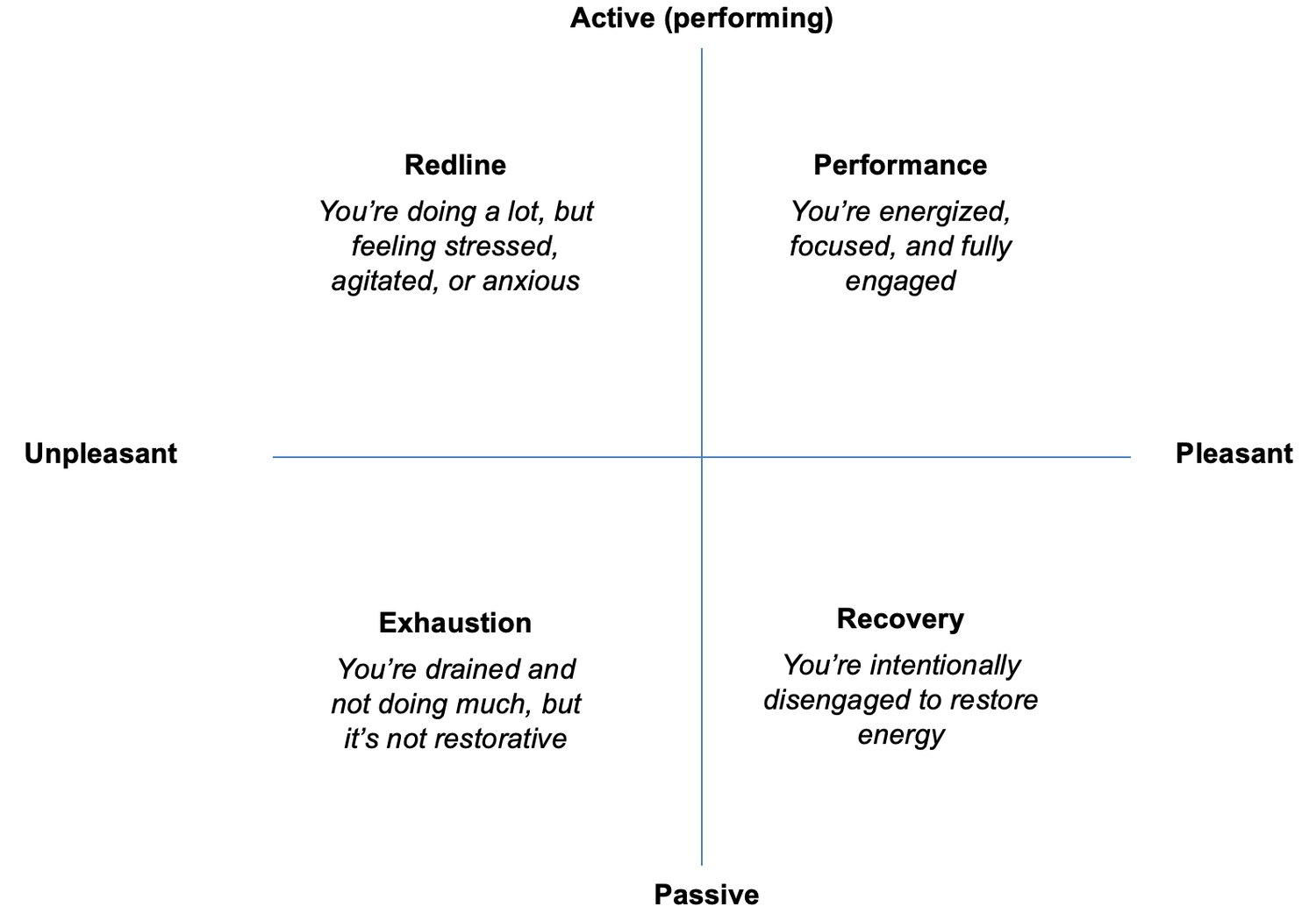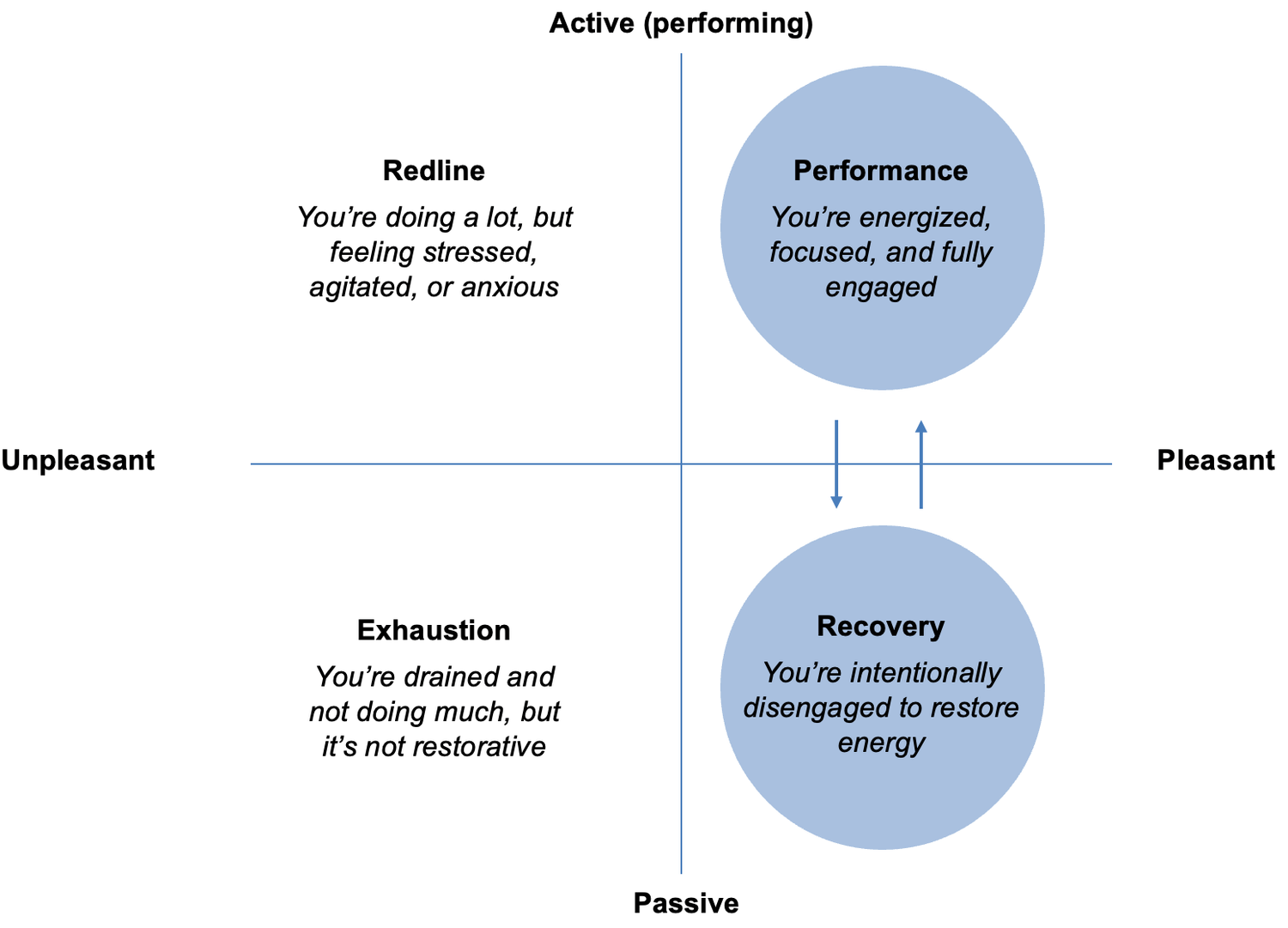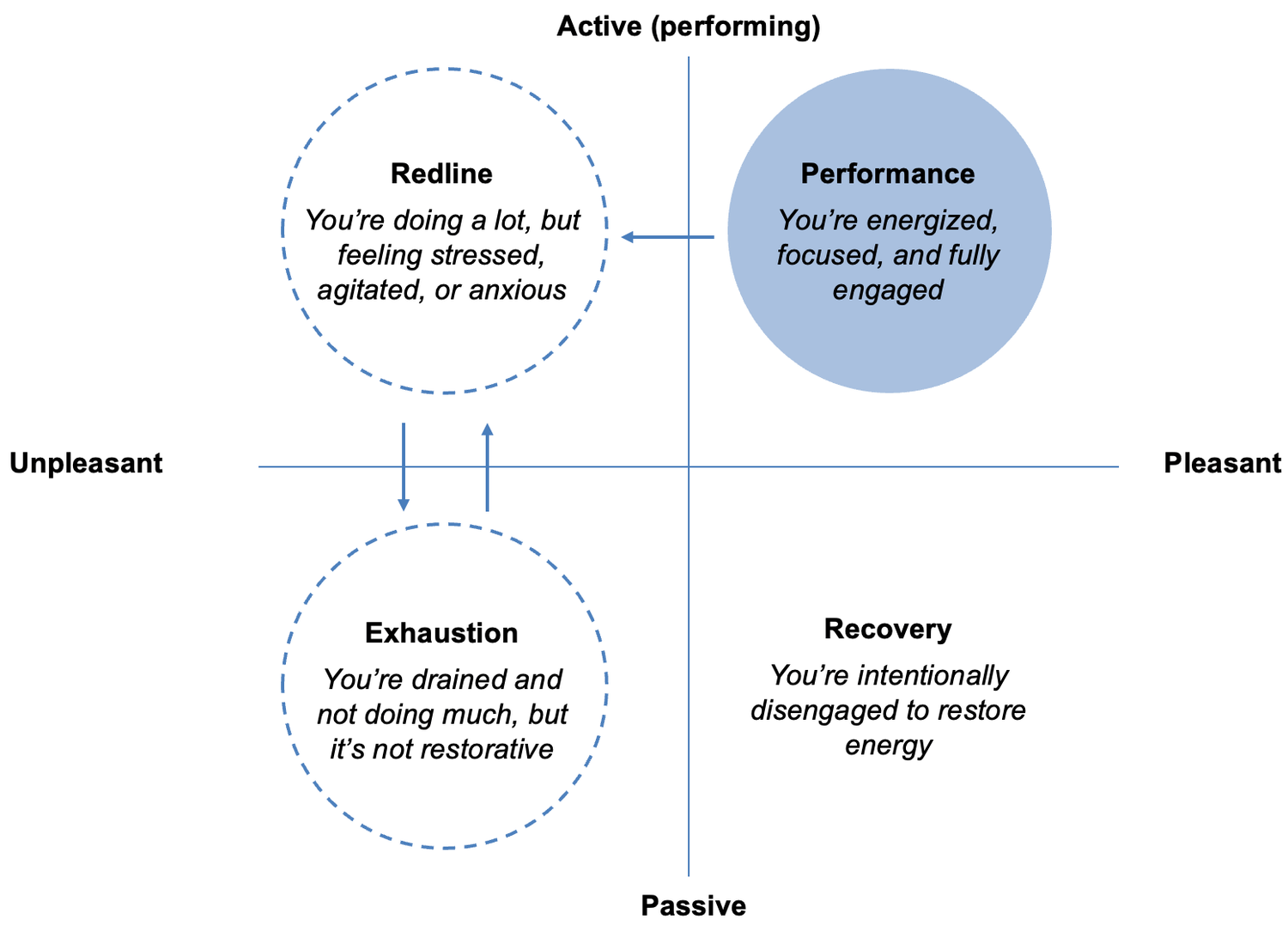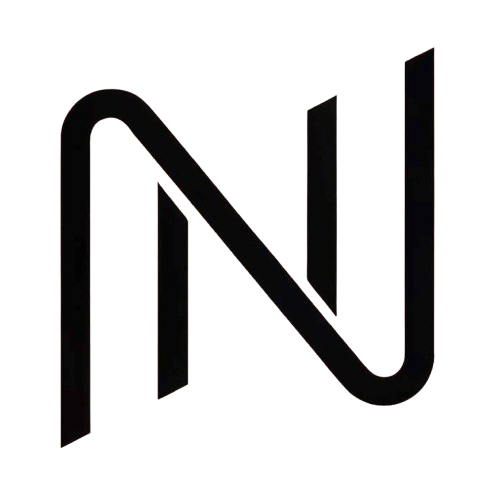Not A Subscriber?
Join a global group of ambitious readers on their quest to understand themselves, life, and business
How to be at your best in all spheres of life
I’ve always grappled with the tension between wanting balance and wanting progress on my goals.
Part of me craves calmness and space, with time to read, reflect, and simply be. Another part is extremely ambitious, driven to build, grow, and move forward. For years I tried to “balance” the two, but it always felt like a trade-off, or at best a delicate, tense balance. And too often, the moment the intensity at work ramped up, the balance tilted heavily towards that side.
What I’ve learned over the years is that sustainable performance and being at your best in all spheres of life require deliberately managing your energy, and that the quality of your energy is much more important than the quantity (or time) that you have.
You can have eight perfectly scheduled hours at work, but if your mind is scattered or your body is tense, you’re not going to be performing effectively. Or, put differently, you can often get more done with 2 hours of super focused work than in 8 hours of ineffective, disrupted work.
Similarly, 1 hour of real recovery is way more effective than 4 hours of pseudo-recovery where you’re zoning out and numbing yourself.
In this perspective I introduce the concept of Performance Zones, which have made a real difference in my life but are somehow still not well known and applied.
It’s a simple but powerful framework that helps you understand and manage your energy and be in the optimal state depending on what you’re trying to achieve.
The four energy zones
The model is simple: imagine a matrix with two axes. The vertical axis moves from active to passive energy, which represents how much energy you’re expending or putting out. The horizontal axis moves from unpleasant to pleasant energy, which represents how the energy feels.

This gives you four distinct zones:
Performance (active + pleasant). You’re energized, focused, and fully engaged. You’re doing meaningful work that stretches you without it being too much, for example deep work sessions, creative brainstorming, giving a presentation, or working out (with intensity). This is the zone of flow and fulfilment.
Redline (active + unpleasant). You’re doing a lot, but it’s fuelled by stress, anxiety, or fear. You’re productive, but at a cost. Example actions include multi-tasking, firefighting, working late, and sustaining your energy with excess caffeine and sugary snacks.
Recovery (passive + pleasant). You’re intentionally disengaged to restore energy. This is rest done right, and is deliberate, conscious, and guilt-free. This could be activities like taking a walk in nature, low-intensity exercise, meditating, spending time with friends, reading a book, or a relaxing hobby.
Exhaustion (passive + unpleasant). You’re resting and not doing much, but it’s not restorative. For example, you’re scrolling, watching mindless television, zoning out, comfort eating, isolating yourself, or numbing your feelings through alcohol or drugs.
Each zone is a specific type of energy, which can either help or hinder you in the long run. Every moment of your day falls into one of these four zones.
The seasons of life
For sustainable performance, your life needs to move in seasons, both macro and micro.
Macro seasons last months or years and involve intense periods of output and growth followed by quieter phases of integration. You might spend a year building something, such as a new business, a creative project, or a new life chapter, and then need a slower phase to rest, reflect, and renew.
Micro seasons happen daily and weekly: you might perform intensely for a few hours in the morning, shift to lighter, creative work in the afternoon, and fully recover in the evening. Every week might include one full day off from work and any mental stimulation.
Throughout your life, you’ll naturally move through cycles of intensity and calm. Don’t expect every day, week, month, or year to be the same. The key is to make these shifts deliberate, so that you can be fully present during both performance and during rest, and make sure that you are spending the right amounts of time in each place. These cycles of push and release make achievement sustainable and life more interesting and meaningful.
I’ve lived this myself: there were years when I was all-in on building and creating, like when I wrote my books alongside a demanding full-time job, and seasons where I consciously prioritised family, friends, and flexibility, and where I worked less by design. Even within shorter cycles, the same rhythm applies: some weeks I sprint with intensity; others, I deliberately take it easier.
When you allow your life to oscillate between performance and deliberate recovery, you create a positive feedback loop: you perform with energy and are effective, and you then rest with intention to truly recharge. You stay on the right side of the chart, moving up and down deliberately. You rarely drift into the drained, unpleasant states on the left side of the chart.
I teach all this in my course, the Inner Edge, where I help participants master their physical, emotional, mental, and spiritual energy. Next cohort goes live on October 22nd. Spots limited. Apply here by October 18.

What most people get wrong
No one can be performing and be in the zone all the time. Even elite performers and athletes structure their lives in periods of performance and periods of recovery. Yet this is often the belief that many ambitious people hold, and which many organizations directly or indirectly promote.
In our modern work culture, many people try to live permanently in the top of the graph, in an active energy state. They treat exhaustion like an unfortunate side effect of pursuing one’s goals, or at worst as a badge of honour and self-worth.
When you stay in performance for too long, you eventually drift into the redline zone. You feel tired or even exhausted, perhaps mentally unclear, but you try to sustain your energy levels through caffeine and snacks. You think you’re in performance, but if you zoom out and look at your effectiveness, chances are that your output is low and not your best work. When you finally decide to rest, you do that by zoning out. You think you’re recharging, but in reality your mind and body are growing weaker, not stronger. You’re in a vicious rather than a virtuous cycle.
No one chooses deliberately to be in a vicious cycle. You don’t wake up and intentionally want to be stressed out or overwhelmed. And zoning out serves a purpose and provides a short-term relief. To get out the cycle, however, you need to be aware of the typical mistakes that people make.
The first is to spend too long in the top part of the chart, in an active state of energy output. Regardless of whether you are redlining or in performance, your body and mind need regular periods of sufficient recovery to be sustained.
The second is to think you’re in performance but you’re actually redlining. You might be productive and getting things done, but if your motivation is fear-based (e.g. “I can’t fail,” “I need to prove myself”), it will quickly drain you and stress you out.
Third, you might confuse rest with recovery. Just because you’re in a passive energy state does not mean you are truly recovering. Watching Netflix or scrolling through your phone might look like rest, but if you’re still mentally agitated and still mentally tired afterwards, it’s not restorative.
Fourth, and counterintuitively, you might mistake performance for recovery, especially if your downtime activities are still activating your system. I see this in high achievers all the time who can’t understand why they feel burned out despite sleeping enough, exercising regularly, and scheduling “downtime.” What they miss is that many of these activities keep them in performance mode. Their workouts are highly intense, for example playing competitive sports, signing up for races, or constantly pushing themselves to the limit in the gym. Even their hobbies turn into subtle performances: learning a new skill, perfecting a recipe, or producing music or art to improve or share publicly. And because their identity and sense of progress are tied to these pursuits, their nervous system never truly switches off.

How to shift between zones
First you need to be aware of how each zone feels.
Performance feels light, clear, creative. You lose track of time. You’re challenged, but you feel capable.
Redline feels tight. You’re fast, but frantic. There’s a hint of irritability or anxiety.
Recovery feels peaceful. There’s space. You’re fully present in the moment, whether reading, walking, or doing nothing at all.
Exhaustion feels heavy. You avoid what you know would restore you because even that feels like effort.
Once you start recognizing these states in real time, you can course-correct along the way, before you drift into the redline or exhaustion zones.
Here are some practical tips to shift between zones:
1. From redline → performance
Slow down your breathing. Ground yourself. Reconnect to why you’re doing what you’re doing. Determine whether you need a short break or not before resuming your work. Pick 1 task and give yourself a deadline.
2. From performance → recovery
Schedule regular moments of disconnection during your workday, week, and year. During your recovery, honour yourself and truly disconnect. This is especially important after periods of intensity. Celebrate your achievements and then allow yourself to rest.
3. From recovery → performance
Switch your mindset and have an intention to be fully present and focused. Don’t drift in and out of work and distraction or mix work and recovery. Create a ritual to start, for example a playlist or a mantra. You can read my full flow protocol here to help you get in the zone more easily.
4. From exhaustion → recovery
Start with the basics: light movement, sunlight, sleep, healthy food, and putting your phone away for a while. Even 5 minutes can make a big difference.
5. From recovery → redline (when needed)
There are times when intensity is required. Use stress strategically with short, focused sprints, tight deadlines, and high energy. But make sure to recover sufficiently afterwards.
Action steps
Try this simple reflection for one week:
At the end of each day, ask yourself:
Which zone did I spend most of my time in today?
What helped me enter the performance zone?
What drained me into redline or exhaustion?
Did I consciously make time for recovery?
Over time, you’ll start to see patterns. Maybe your mornings are great but afternoons drift into redline. Maybe weekends look like recovery but actually feel more like exhaustion.
Once you become aware of it, you can manage it.
If you want to take this further and master your energy and performance in a small, high-impact group, apply to my next cohort here by October 18. Spots limited to 10 people.

About the author Nicolai Nielsen
I am the bestselling author of 3 books, former McKinsey Academy Associate Partner, and the founder of Potential Academy.
My mission is to raise global consciousness through education and inspiration.




